'The Fugitive' director says Harrison Ford needed 'a little convincing' to match wits with Tommy Lee Jones in the 1993 action classic
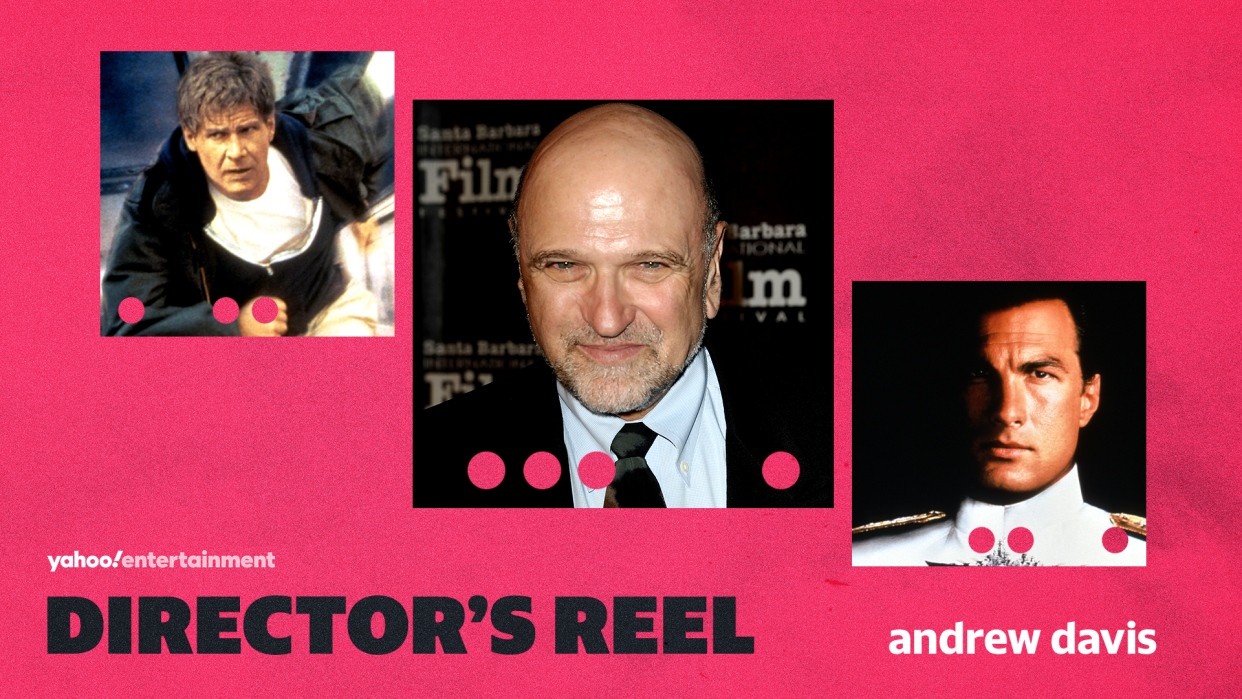
After an almost 50-year run run as one of Hollywood's most popular action heroes, it's safe to say that Harrison Ford isn't intimidated by many villains — whether they're Nazis or TIE fighter pilots. But there is one opponent he was nervous about going up against: Tommy Lee Jones. Thirty years ago, the famously gruff actor played Sam Gerard, the U.S. Marshal who doggedly pursues Ford's accused murderer, Dr. Richard Kimble, in the 1993 action favorite The Fugitive.
And director Andrew Davis tells Yahoo Entertainment that Indiana Jones's alter ego required some extra reassurance about keeping up with another Jones onscreen. "I think Harrison thought, 'Tommy's a powerful actor — I don't want to be in his shadow,'" the 76-year-old filmmaker explains.
Watch our interview with Andrew Davis below
Certainly, The Fugitive proved to be a breakout showcase for Jones, who had quietly been building a strong filmography with memorable roles in films like Coal Miner's Daughter and two Davis-directed action hits, 1989's The Package and 1992's Under Siege. "He's a fantastic actor, and I thought he would be perfect for Gerard," says the filmmaker, who notes that the studio executives at Warner Bros. agreed to his casting without any hesitation. "Harrison took a little convincing, but it worked out fine."
Things worked out more than fine for Jones, who was instantly catapulted onto Hollywood's A-list and won the Best Supporting Actor Oscar to boot. But Ford and Davis were equal participants in The Fugitive's fortune and glory, which included a nearly $400 million haul at the worldwide box office and seven Oscar nods, including Best Picture — a rarity for a summer action movie. "I was upset that Harrison and I didn't get nominated," Davis allows. "But we got seven nominations and it was such a beloved hit. If it wasn't for Schindler's List, we may have won Best Picture, I think."
"Tommy got a lot of attention, but Harrison did a great job," the director adds. "I think it's his best role. He plays this real character and the emotion he brings to it is profound."

You might say that keeping it real was Davis's whole mission statement with The Fugitive. Adapted from the TV series that ran from 1963 to 1967 on ABC, the movie version retains the show's premise — Kimble is falsely accused of murdering his wife, and then goes on the lam searching for her real killer, an elusive one-armed man — but turbocharges the pace and tension. "The basic concept of an unjustly accused man is a great story," says Davis, who confesses that he never watched the TV version during its original airing. "I knew there was something I could do with it; I just had to figure out how to make the script work for me."
Re-shaping the script required jettisoning some of the elements that rang false to Davis — elements like a climactic twist that revealed Gerard had actually hired the one-armed man that killed Kimble's wife. "That didn't make any sense to me," Davis says now. He was also adamant about eliminating an attempt at shoehorning in a romantic subplot for a grieving Ford. Julianne Moore has a small role in the film as a doctor at Kimble's hospital who crosses paths with the fugitive and early drafts of the screenplay positioned her as a love interest for the desperate hero.
"[Producer] Peter MacGregor-Scott came to me and said, 'Andy, we can't have this — he's mourning his wife!'" Davis recalls of the scene in question, which would have featured Ford seeking refuge at Moore's apartment and taking a shower, setting the stage for romantic sparks to fly. "I totally agreed and we both went to [producer] Arnold Kopelson and told him we couldn't shoot it. He had to make the call to Julianne. She was disappointed, but it was best for the movie. And it didn't hurt her career!"
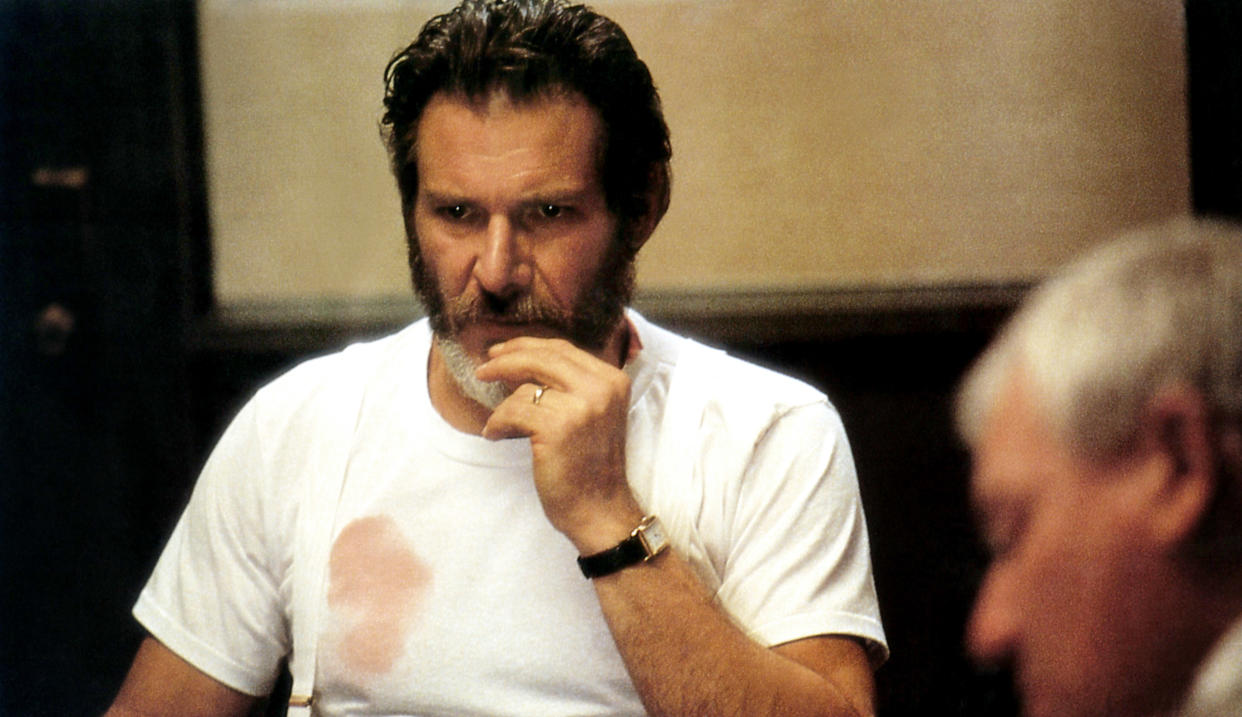
The Fugitive's relentless pace mirrors how the film was made. Davis says that production lasted from February to May in 1993 and Warner Bros. asked the team to have it ready to premiere in theaters that August. "I think we edited the movie in seven or eight weeks, which was unheard of," he remembers. "We had a team of three editors and I would go from room to room working with each of them. It helped that we weren't shooting long dialogue sequences; it was always about Gerard looking for Kimble, and he's constantly getting away."
Davis also shot The Fugitive largely in sequence, which adds to the feeling that you're watching this manhunt play out in near real-time. Although the director says that Warner Bros. wanted him to speed up one particular plot point — when Ford would shave the thick beard that Kimble sports at the beginning of the film. "The head of the studio, Bob Daley, said 'Get that beard off him — I didn't pay to see that,'" Davis says, laughing. "And Harrison actually shaves it off onscreen. We didn't fake anything."
Of course, there is a little bit of movie magic sprinkled into the film's most famous set-piece. Davis says that rear projection was used for a few shots in the sequence where a train crashes into the prison bus carrying Kimble to jail, but notes that the crash itself was captured on camera for real in a single take. "You don't get to do Take 2 on a shot like that," he says. "It was designed so that the train would turn over exactly how we wanted it and when the marshals arrive the next day, it was there for them — like a history of what we'd done."
Speaking of history, Davis would like to correct the record about a piece of lore that's sprung up around The Fugitive's most famous scene. Cornered in a storm drain by Gerard, Kimble holds his pursuer at gunpoint and insists, "I didn't kill my wife!" To which the marshal incredulously replies, "I don't care." It's been said that the scene was originally much longer, but Davis says he made a point of keeping their exchange to the point.
"I think somebody — maybe even Harrison — has said that pages and pages of dialogue were cut out," he chuckles. "But I don't remember going to set that day and cutting dialogue. That moment is very simple — it's what they needed to say to each other, you know? Somebody also once told me that Tommy didn't want to say, 'I don't care,' and I don't believe that either. These stories come out of the ether and either they're lies or I just don't remember!"
Thirty years later, The Fugitive remains Davis's most lauded movie, but the Chicago-born and -bred director has a career that spans multiple eras and genres. In our latest Director's Reel, Davis revisits some of his signature cinematic achievements, from a Chuck Norris-led riff on High Noon to a contemporary children's classic.
Code of Silence (1985)
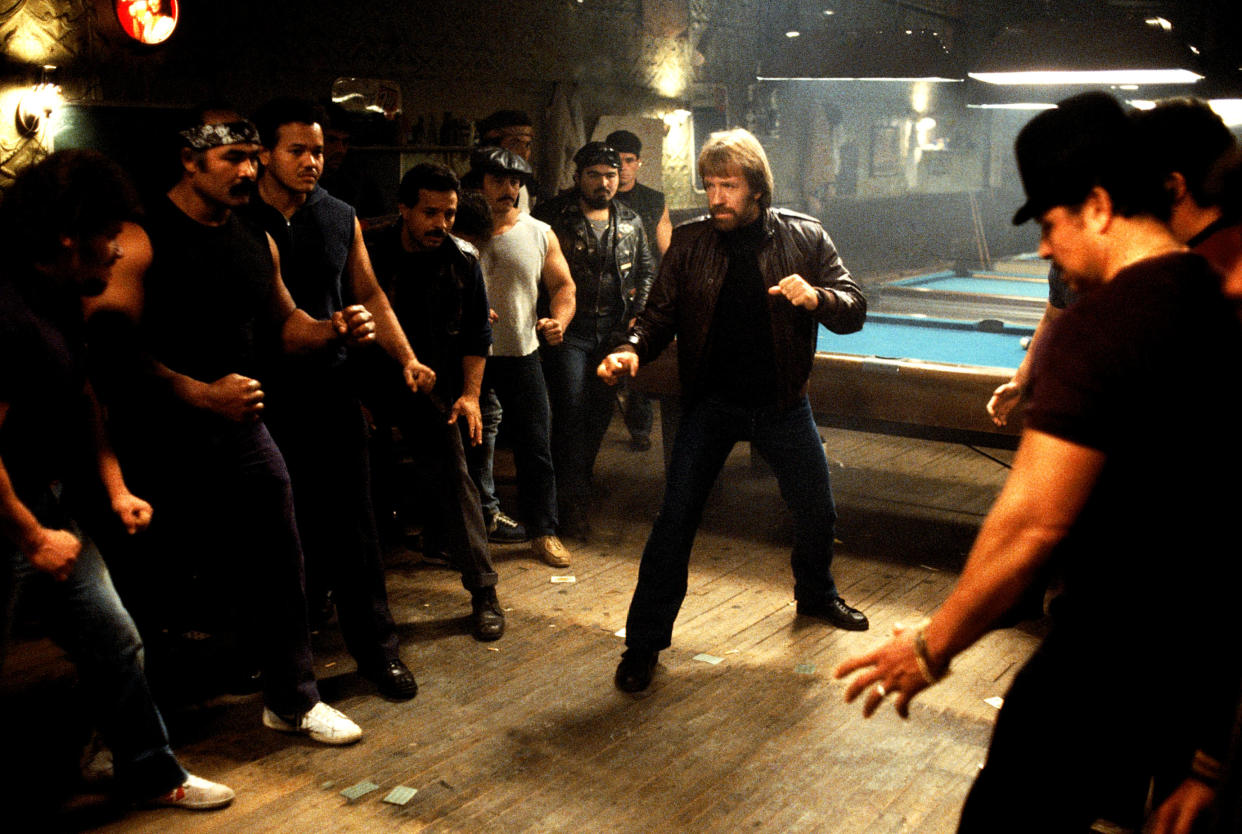
Davis had a good reason for not watching the '60s version of The Fugitive: He spent much of that turbulent decade on the streets of Chicago pursuing progressive policies alongside other politically aware young people. In fact, his filmmaking career began against the backdrop of 1968 Democratic Convention, which threw the Windy City into chaos. Legendary director and cinematographer, Haskell Wexler, captured some of that chaos on camera in his 1969 film Medium Cool and gave a then-22-year-old Davis — who was fresh out of college with a journalism degree in hand — one of his earliest crew gigs.
A decade later, he graduated to the director's chair with 1978's Stony Island, which captured Chicago's vibrant R&B scene circa the late '70s, followed by the 1983 horror movie The Final Terror. But it was Davis's third film, Code of Silence, that set the tone for the next phase of his career. Originally developed as a Dirty Harry sequel for Clint Eastwood's vigilante cop, the thriller instead became a star vehicle for Chuck Norris, whose career was riding high after early '80s action hits like Lone Wolf McQuade and Missing in Action. The producing team offered the director's chair to Davis, who remembers having concerns about the script, which followed a steadfast Chicago cop, Eddie Cusack, caught between two warring drug gangs and corruption within his own department.
"It needed a lot of work," he says now, adding that the revised screenplay was rooted in a real Chicago crime story. And Davis made full use of the city when he started shooting, staging action sequences in real locations, including the top of an L train as it rattles over the Chicago River. He also cast actual Chicago cops in the film, including the late Dennis Farina who had previously appeared in Michael Mann's 1981 favorite, Thief. (Farina officially retired from the force following Code of Silence.) "That movie covered very topical subjects," Davis notes. "Police cover-ups is still a theme that resonates today."
Code of Silence also features a Norris performance that's in a different register from his bombastic action movies of that era. Abandoned by his fellow officers and pushed to the limits of his endurance, Eddie goes about his job with a weariness that's more in keeping with Gary Cooper's isolated small town marshal in High Noon. Norris is even shown taking on an entire gang with his formidable martial arts skills... and losing.
According to Davis, though, the star wasn't overly protective of his screen image. "Chuck was easy to work with and very supportive," he recalls. "I think he's proud of the movie, and it was a big hit. It also put me into the world of being an action director, which I guess I'm considered even though I've also done other kinds of movies."
Above the Law (1988)
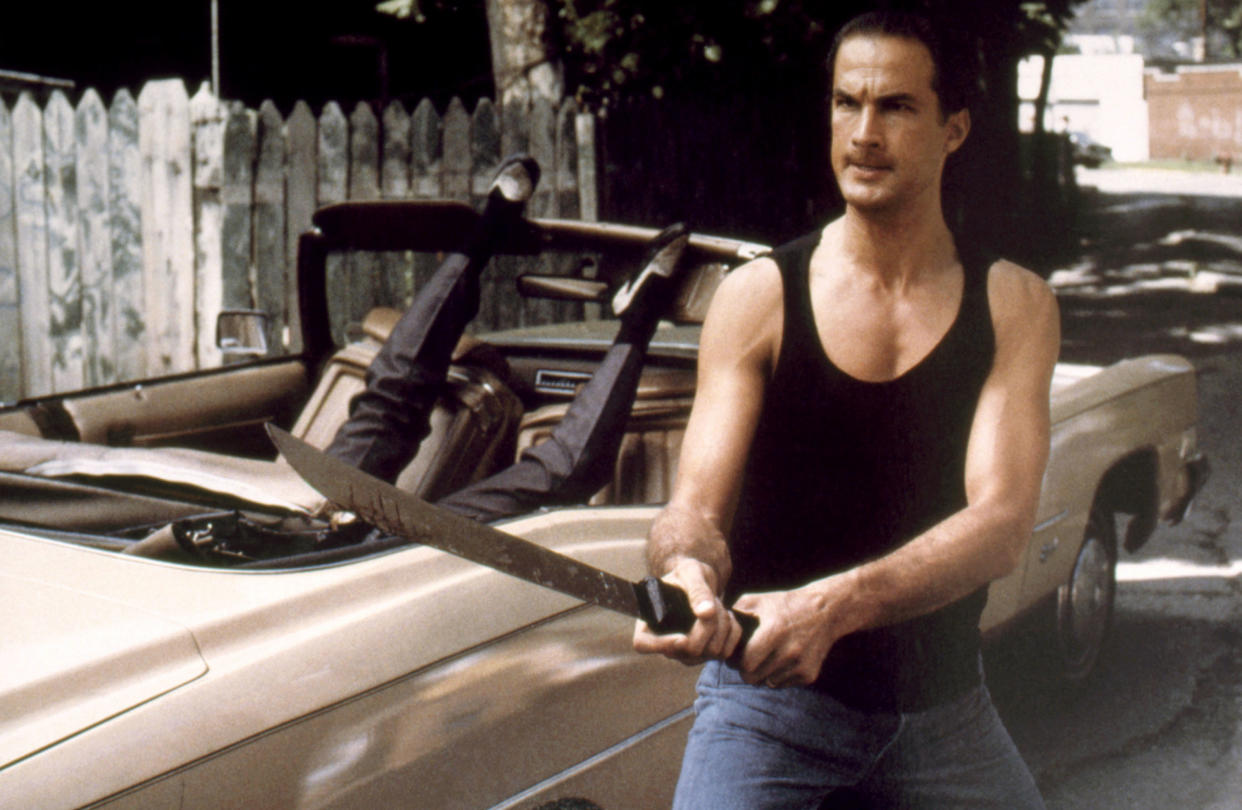
Having successfully awarded an established action hero one of his biggest hits, Davis was next tasked with creating a new action star with Above the Law, another film about a steadfast cop who fought gangsters and dishonesty within his own department. "I had a meeting with Warner Bros., and they said: 'We want you to meet this guy, Steven Seagal,'" the director remembers with a laugh. "I was like, 'Who is Steven Seagal?'"
Davis wasn't the only one asking at that question. At the time, Seagal was a Hollywood-based marital arts instructor who specialized in aikido, which he had learned during a multi-year stay in Japan. One of his star pupils was super-agent Michael Ovitz, who grew certain that he was learning from the town's next big movie star. "I met with Steven and he said, 'I saw Code of Silence and I want you to direct my movie,'" Davis says. "I went, 'Well... can you act?'"
With Warner Bros. footing the bill, Davis arranged for a screen test in Chicago, which paired Seagal with some of the real-life cops who had appeared in Code of Silence. "We did an action scene and an emotional scene," he recalls, adding that the studio liked what they saw. But Davis still had concerns about the script, which he addressed by folding in details of Seagal's own life story into the character of Nico Toscani and also weaving real world news stories like the Iran-Contra affair into the film's invented tale of corruption within the halls of power.
And just like that, Hollywood had its next action hero. "Above the Law came out and Steven became a big star overnight," Davis remembers. "He didn't look like anyone else with that ponytail and the aikido moves. It really launched him."
Under Siege (1992)
Four years after launching Seagal's career, Davis was called upon to re-launch it. While the action crowd still turned out to see Seagal-led movies like Marked for Death and Out for Justice, those films were on a downward curve in terms of quality. In the intervening years, the genre's template had also been completely reset by Die Hard, which opened three months after Above the Law and popularized the "Die Hard on a [blank]" school of action movies that continued throughout the '90s.
Case in point: Under Siege was "Die Hard on a battleship," with Seagal playing a former Navy SEAL-turned-ship's cook who defends the USS Missouri against Tommy Lee Joness's ex-CIA operative-turned-terrorist. "I just inherited the concept," Davis says of the Die Hard connection. "It's funny, there's a podcast series called Die Hard on a Blank, and the Under Siege episode they did is fantastic. The movie was what it was, and I'm glad that people seem to like it."
But Davis didn't necessarily like reuniting with Seagal, who was no longer the scrappy newcomer he'd been in 1988. "He was a pain in the neck," the director says candidly of the actor, who no longer works in Hollywood following numerous personal and legal troubles. "He had become arrogant. Tommy Lee is actually in a lot more of Under Siege than Steven Seagal! But it all worked out: Under Siege became Seagal's biggest movie, and it got me The Fugitive."
A Perfect Murder (1998)
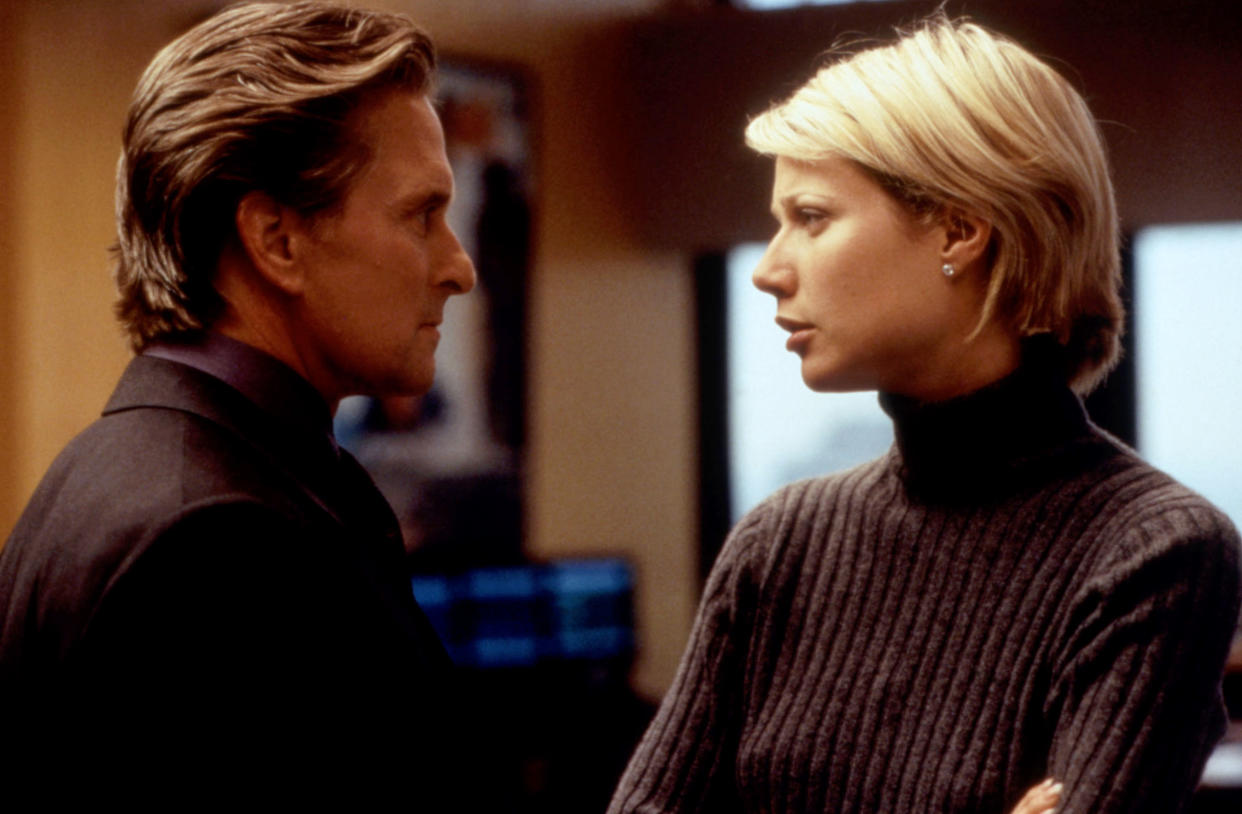
In the wake of The Fugitive, Davis helmed 1995's Steal Big Steal Little, and 1996's Chain Reaction starring Keanu Reeves — two movies he describes as creatively rewarding, even though they disappointed commercially. A Perfect Murder awarded him another box-office win when it opened in theaters 25 years ago this summer, starring Michael Douglas, Gwyneth Paltrow and Viggo Mortensen in a steamy update of Alfred Hitchcock 1954 thriller Dial M for Murder. Funnily enough, Gus van Sant released his controversial shot-for-shot remake of Psycho later that same year, but Davis says he had no interest in channeling the Master of Suspense.
"I watched Hitchcock movies growing up, but they seemed phony," he admits. "I was into realistic directors like Sidney Lumet and Norman Jewison. Also, Dial M for Murder is not one of Hitchcock's better films. It was based on a play and he shot it for 3D with a bigger camera, so it was very static."
Davis set out to freshen up the twisty tale of a husband (Douglas) who attempts to orchestrate the murder of his adulterous spouse (Paltrow) by letting the movie spill out onto the streets of New York City — a new location for him to explore after making multiple movies in Chicago. "The movie is about a very wealthy couple living on the Upper East Side and she had this lover with a loft in Brooklyn, so I wanted to keep the textures of both neighborhoods and designed the production around that," the director explains. "It was a very enjoyable movie to make."
In a perfect world, Davis would have had final say over A Perfect Murder's ending. Instead, test audiences got to choose between the two final scenes that were shot — one of which features Paltrow shooting Douglas after he attacks her, while the other shows her shooting him and then making it seem like he had attacked her. "I liked that ending," Davis says now. "But test audiences felt she was more empathetic if she killed her husband [in self-defense]. It worked out for the movie."
Making A Perfect Murder also meant that Davis wasn't available to direct U.S. Marshals, the 1998 sequel to The Fugitive that featured Jones's Gerard chasing after Wesley Snipes's framed fugitive. But he also thinks that worked out for the best. "I watched it once," he remembers of the Stuart Baird-directed film. "I had a lot of friends who worked on the movie, and they had a great cast. I appreciated it, but it was quite derivative."
Collateral Damage (2002)
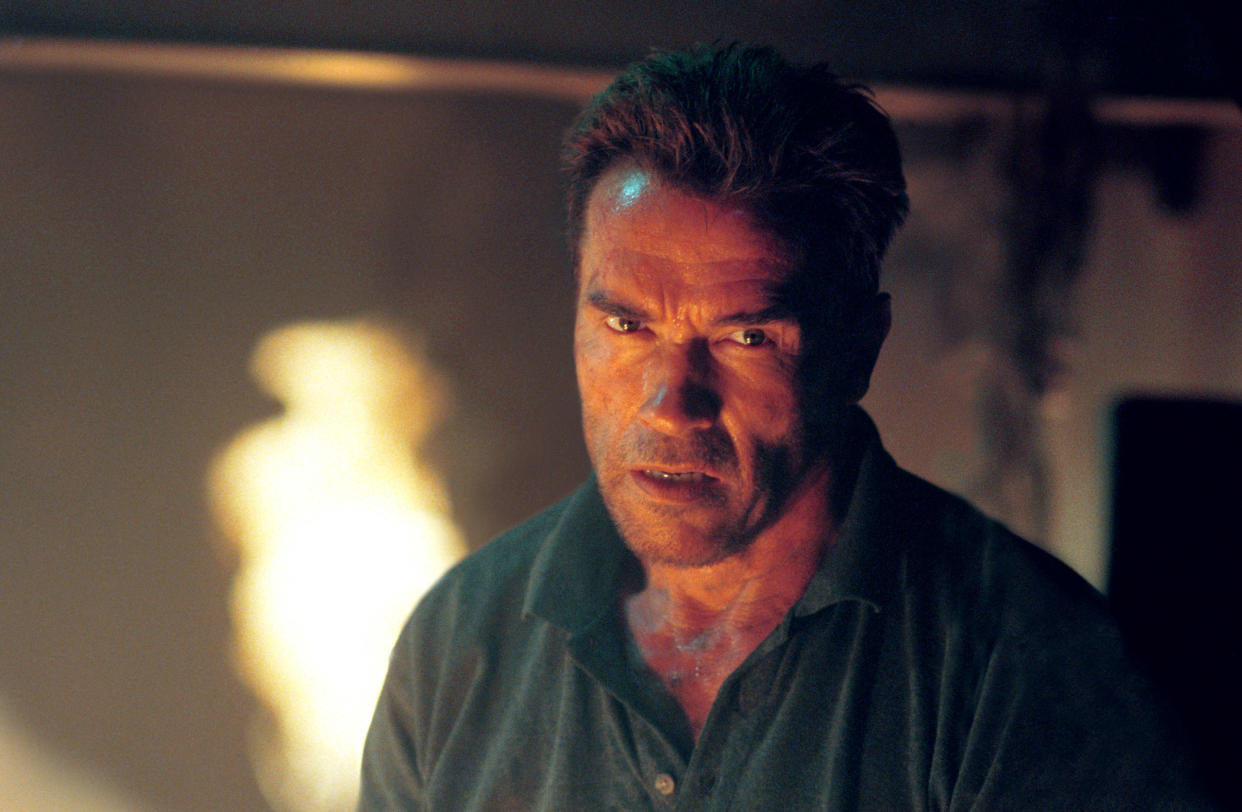
In the movie business, success or failure can sometimes come down to a simple matter of timing. That's what Davis discovered during what became a three-year collaboration with Arnold Schwarzenegger on Collateral Damage, the story of a firefighter who seeks vengeance on the terrorist group behind the bombing that killed his wife and son. In the original version of the script, the terrorists hailed from the Arab world, but Davis strongly felt that would date the film.
"There was so much Arab bashing going on at that point, and I didn't want to do that," he recalls. Instead, he turned his attention towards the South America, where civil unrest was inspiring civil wars and the formation of terrorist groups. Davis also deliberately highlighted America's longtime role in the region's various conflicts.
"Arnold's got some pretty interesting lines in that film about learning the reality of our history in South America," he notes. "And I thought it was interesting to have this macho hero learn that the people who killed his family had the same thing happen to them by our government. I think the film still holds up in terms of talking about what was really going on politically down there."
Filmed in the fall of 2000, Collateral Damage was slated to arrive in theaters on Oct. 5, 2001. But that plan was upended by the Sept. 11 attacks, which put terrorism back in the headlines. Warner Bros. ended up delaying the film and made significant changes to the story, including dropping a sequence that featured future Modern Family star Sofia Vergara hijacking an airplane. And when it finally arrived in theaters in February of the following year, the studio gave it the bare minimum of promotion.
"We actually scouted some locations in New York, and I have pictures of all these firehouses and firemen from before that day," Davis says of the movie's eerie connection to 9/11. "And if you look at footage from the World Trade towers [on 9/11], you can see a picture of Schwarzenegger on a huge Collateral Damage poster in the background."
Holes (2003)
'80s kids had Time Bandits. '90s kids had Hocus Pocus. And if you were born between 2000 and 2010, chances are good that Holes was your cult kids movie of choice. Based on Louis Sachar's bestselling book, the Walt Disney-released movie spins a wild yarn that plays like a fractured fairy tale version of Cool Hand Luke. "It's not your usual Disney movie," Davis says with a laugh. "It's got provocative things in there. And all of that was in the book; I was so taken by what Lewis had created and was very grateful that I was able to interpret it onscreen."
Holes recently celebrated its 20th anniversary and Disney hosted a special reunion screening attended by Davis and many of the film's now-grown cast, including its now-divisive star, Shia LaBeouf. "He was like a young Dustin Hoffman or Tom Hanks," Davis says of his collaboration with LaBeouf in his first major movie role. "He's his own unique person and a very talented actor."
The Guardian (2006)
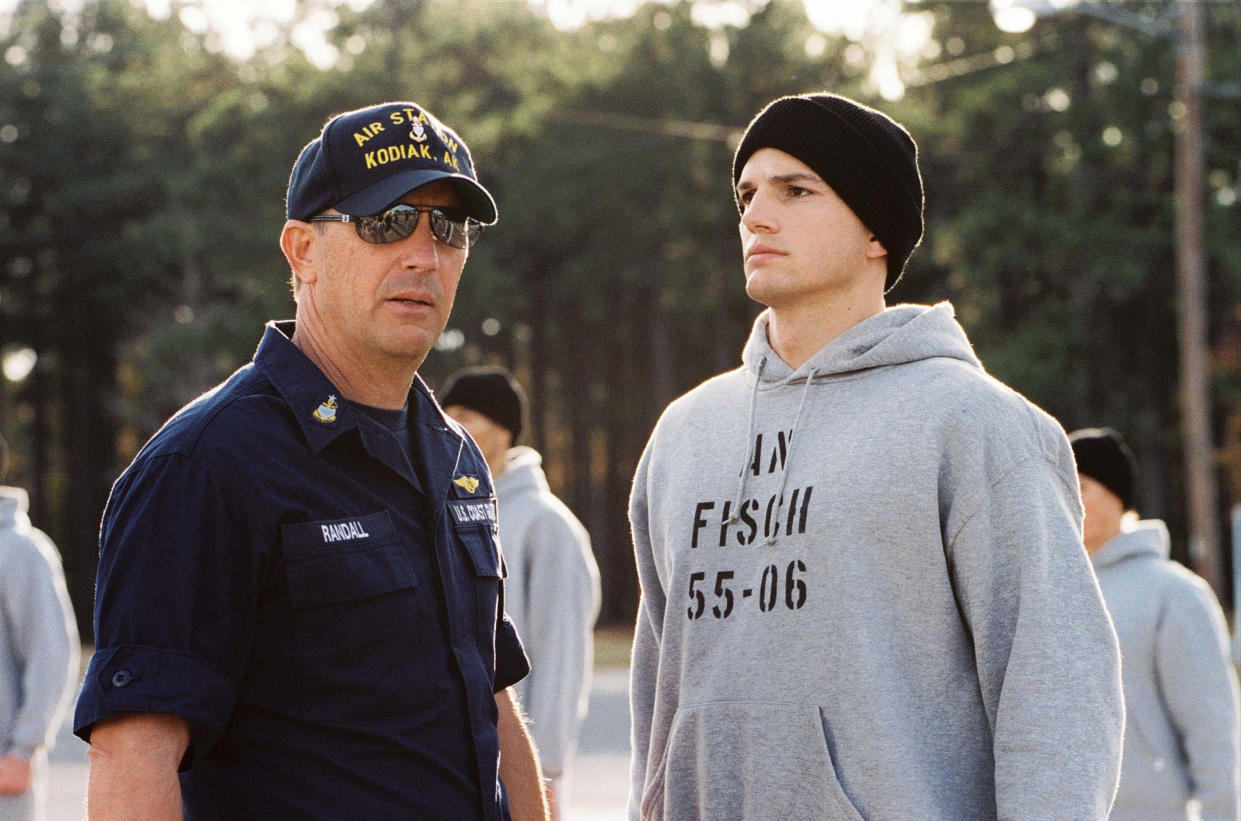
Stop us if you've heard this one: an aging officer experiences a major mishap on his latest mission and gets reassigned to training the next generation — including a particularly rebellious pupil who reminds the older man of his younger self. That's the plot of Top Gun: Maverick, but it's also the story of The Guardian, which opened 16 years before Tom Cruise's blockbuster sequel and stars Kevin Costner as the veteran Coast Guard rescue swimmer and Ashton Kutcher as the new kid on the block.
"Ashton could have been a real Coast Guard swimmer — he was that good," Davis says of the That '70s Show star. "What was really great about that film is that the Coast Guard built a new training facility for their rescue swimmers, and we designed the wave tank that allowed us to make it look like the audience was really there in the middle of a storm."
Davis hasn't directed a feature film since The Guardian, but he recently completed a novel with Jeff Biggers that he hopes to adapt for the screen. "It deals with the theme of what would happen if someone tried to get rid of all the nuclear weapons in the world and what the blowback would be from the military," he teases. "We have to get rid of these stupid weapons, because there's going to be an accident. That's what happens in our story: There's an accident and people go, 'We can't do this anymore.'"
At the same time, Davis recognizes that's the kind of grounded story that's increasingly harder to tell in contemporary Hollywood, where effects-heavy spectacles based on comic books or pre-existing franchises dominate studio slates that previously made room for films like The Fugitive. "There's a lot of fine movies being made, you've just got to find them at film festivals or independently," he says, citing last year's Best Picture nominee Triangle of Sadness as one of his recent favorites. "Visually, studio movies today are incredible: they all look great and the special effects are mind-boggling."
"But that stuff is also numbing," Davis adds with a wry laugh. "How many times can you watch things blow up or people fly through the air? I thought Harrison did a great job in that last Indiana Jones movie — but I didn't really care about looking for that time machine, you know?"
The Fugitive is currently streaming on AMC+.
